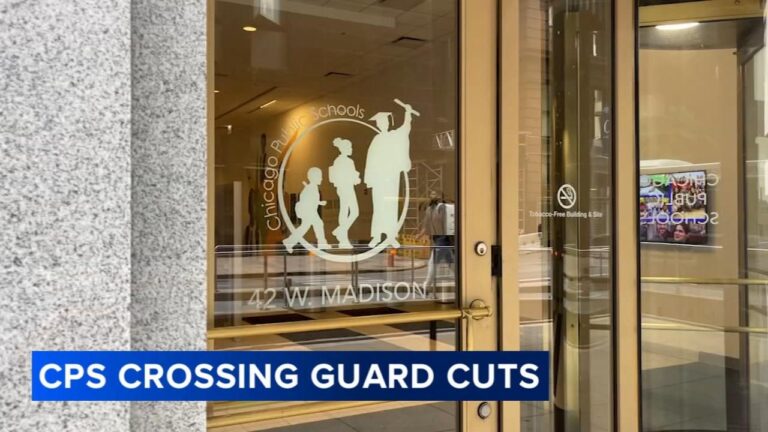Chicago Public Schools Navigate Workforce Cuts Amid a $734 Million Budget Deficit
Financial Challenges Prompt Significant Staff Reductions in Chicago Schools
Chicago Public Schools (CPS) are currently confronting a severe financial crisis, grappling with a $734 million budget deficit that has necessitated substantial workforce reductions. This fiscal strain, intensified by declining student enrollment and shrinking state funding, has compelled district leaders to make tough decisions aimed at stabilizing finances while striving to limit the impact on educational delivery.
Staffing reductions are expected across several key areas, including:
- Educators: Many schools will experience a decrease in teaching personnel, especially in elective and specialized subjects, leading to larger class sizes.
- Support Staff: Roles such as school counselors, librarians, and instructional aides face cuts, which may affect student support services.
- Administrative Employees: Central office and district-level administrative positions are also being trimmed to reduce overhead expenses.
| Staff Category | Estimated Layoffs | Anticipated Budget Savings |
|---|---|---|
| Teachers | 450 | $25 Million |
| Support Personnel | 150 | $8 Million |
| Administrative Staff | 100 | $5 Million |
While CPS officials are actively pursuing additional funding avenues, including lobbying for increased state aid, the immediate priority remains cost containment. Community advocates and union leaders have expressed concerns about the long-term repercussions of these cuts on educational quality and student achievement, underscoring the necessity for ongoing dialog and transparency during this critical period.
Strategic Responses from School Leadership to Mitigate Budget Deficit
In light of the daunting $734 million shortfall, CPS administrators have unveiled a complete plan that balances fiscal austerity with the goal of preserving educational standards. This plan includes carefully targeted layoffs, reallocating resources to safeguard essential classroom functions, and enhancing operational efficiencies.
Moreover, the district is investing strategically in technology upgrades and bolstering support services to generate long-term cost savings and improve student outcomes. Efforts to diversify revenue streams through partnerships with local enterprises and intensified advocacy for state funding are also underway. The following table outlines the core strategies being implemented:
| Initiative | Focus Area | Expected Outcome |
|---|---|---|
| Selective Staff Reductions | Human Resources | Cut payroll expenses by approximately 15% |
| Resource Prioritization | Instructional Funding | Maintain classroom budgets |
| Technology Enhancements | Operational Efficiency | Reduce long-term costs |
| Community Collaborations | Funding & Support | Broaden financial resources |
Community Mobilization and Expanded Student Support Amid Staffing Cuts
Following the proclamation of widespread layoffs, community organizations, parents, and city officials have rallied to mitigate the impact on students and staff. Expanded initiatives now include tutoring programs,mental health workshops,and peer mentoring networks designed to support students during this transitional phase.
Key support initiatives currently in place include:
- Increased availability of school-based counseling services
- Volunteer-led after-school academic assistance programs
- Collaborations with nonprofits to provide food security and fund extracurricular activities
- Regular public forums to maintain open interaction between families and district leadership
| Support Service | Description | Beneficiaries |
|---|---|---|
| Mental Health Counseling | Additional on-site mental health professionals | Students and Staff |
| Academic Tutoring | After-school sessions led by community volunteers | Students at Risk |
| Food Assistance | Meal programs coordinated with local food banks | Low-income Families |
| Community Engagement Forums | Open discussions addressing concerns and updates | All Stakeholders |
Long-Term Recommendations for Financial Stability and Resource Optimization
Closing the substantial budget gap requires innovative and enduring financial strategies beyond immediate cost-cutting. Experts recommend that CPS and policymakers focus on cultivating a diverse funding portfolio by strengthening collaborations with local businesses, philanthropic groups, and community organizations. Prioritizing funding tied to measurable educational outcomes can enhance resource allocation transparency and accountability.
Additionally,adopting technology-driven operational efficiencies and environmentally sustainable practices can reduce ongoing expenditures. Active community involvement remains essential to balancing fiscal constraints with educational priorities.Suggested actions include:
- Implementing participatory budgeting processes to empower stakeholders in financial decision-making
- Establishing centralized resource management systems to optimize asset utilization and minimize waste
- Proactively seeking grants aligned with curriculum advancement and infrastructure needs
- Adopting sustainable procurement policies favoring cost-effective and eco-amiable products
| Approach | Anticipated Benefit | Priority Level |
|---|---|---|
| Community Partnerships | Enhanced funding diversity | High |
| Technology Integration | Reduced operational costs | Medium |
| Grant Acquisition | Additional revenue streams | High |
| Participatory Budgeting | Greater spending transparency | Medium |
Final Thoughts
As Chicago Public Schools confront the immense challenge of bridging a $734 million budget deficit, the repercussions for staff and students are profound. With layoffs already in motion, district leaders must carefully balance fiscal duty with their commitment to delivering quality education. The upcoming months will be pivotal as CPS explores option funding sources and strives to maintain stability within classrooms citywide. Stakeholders remain vigilant, hopeful for solutions that uphold both financial health and student success.





